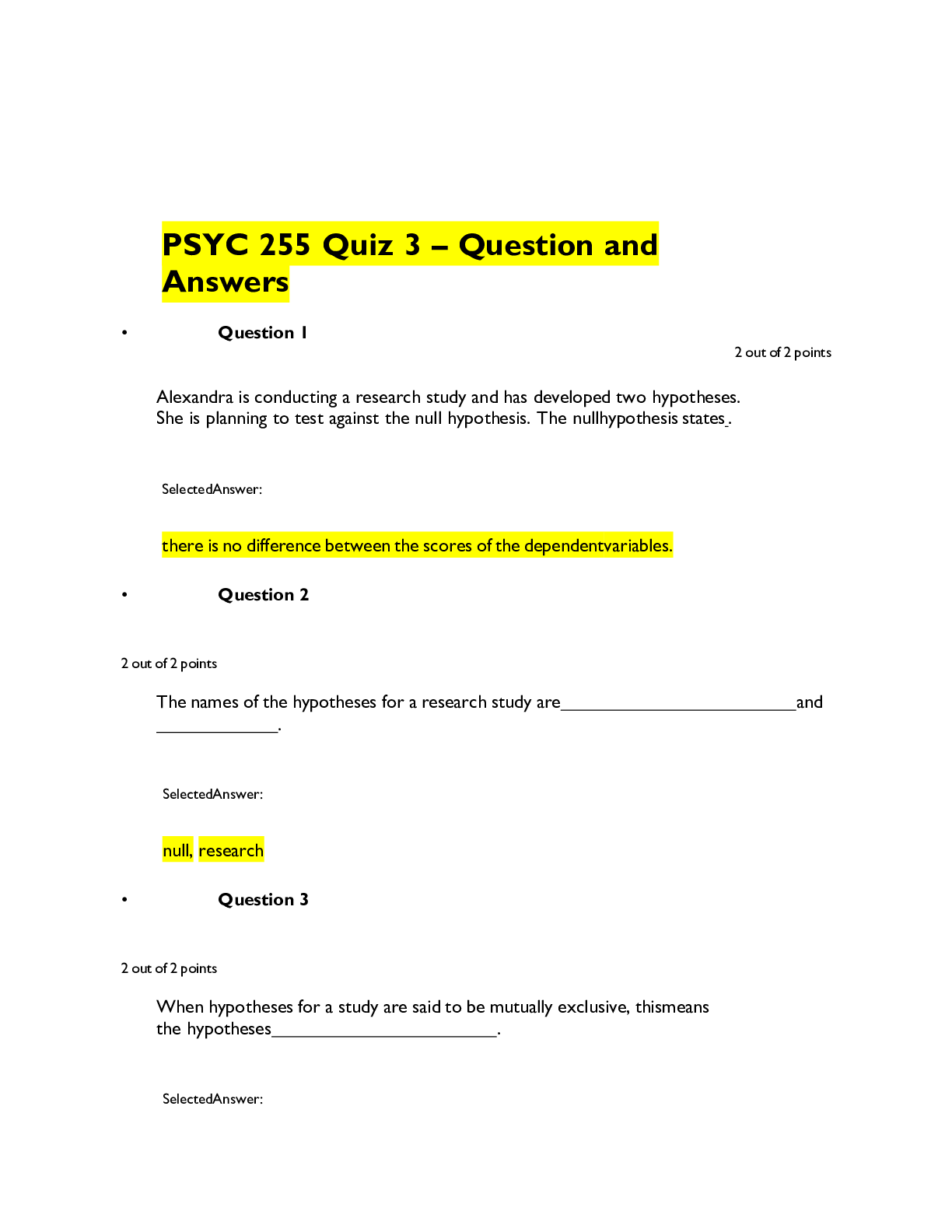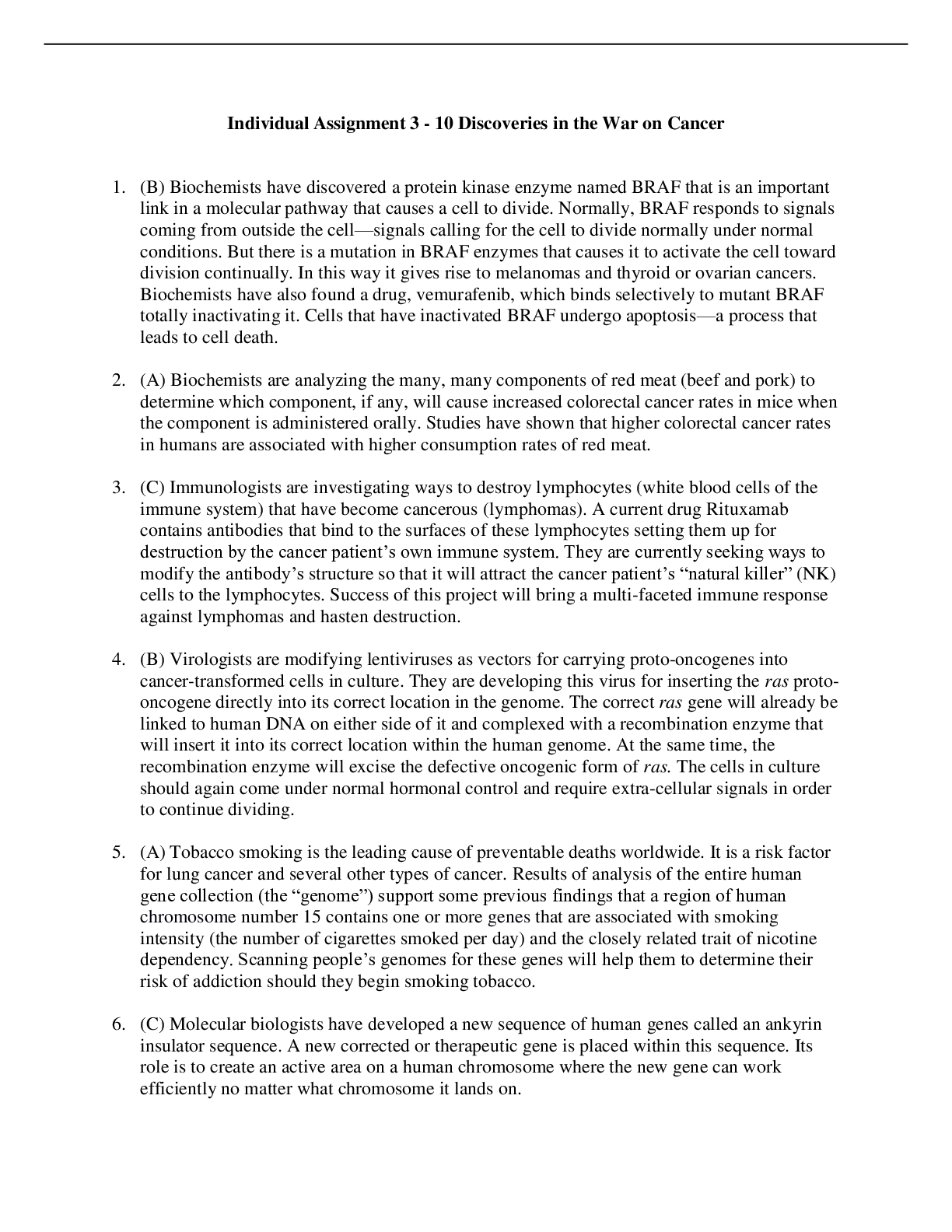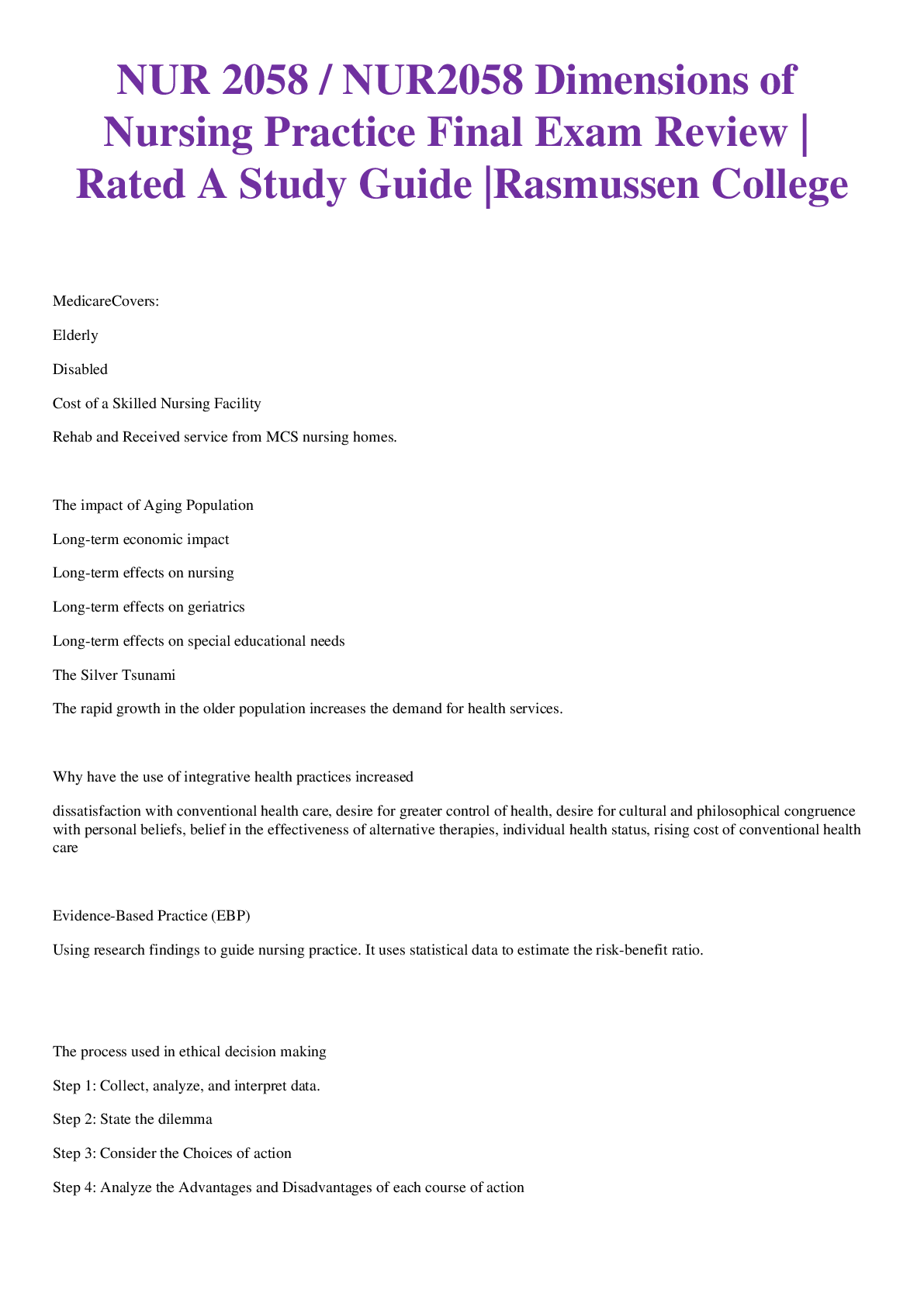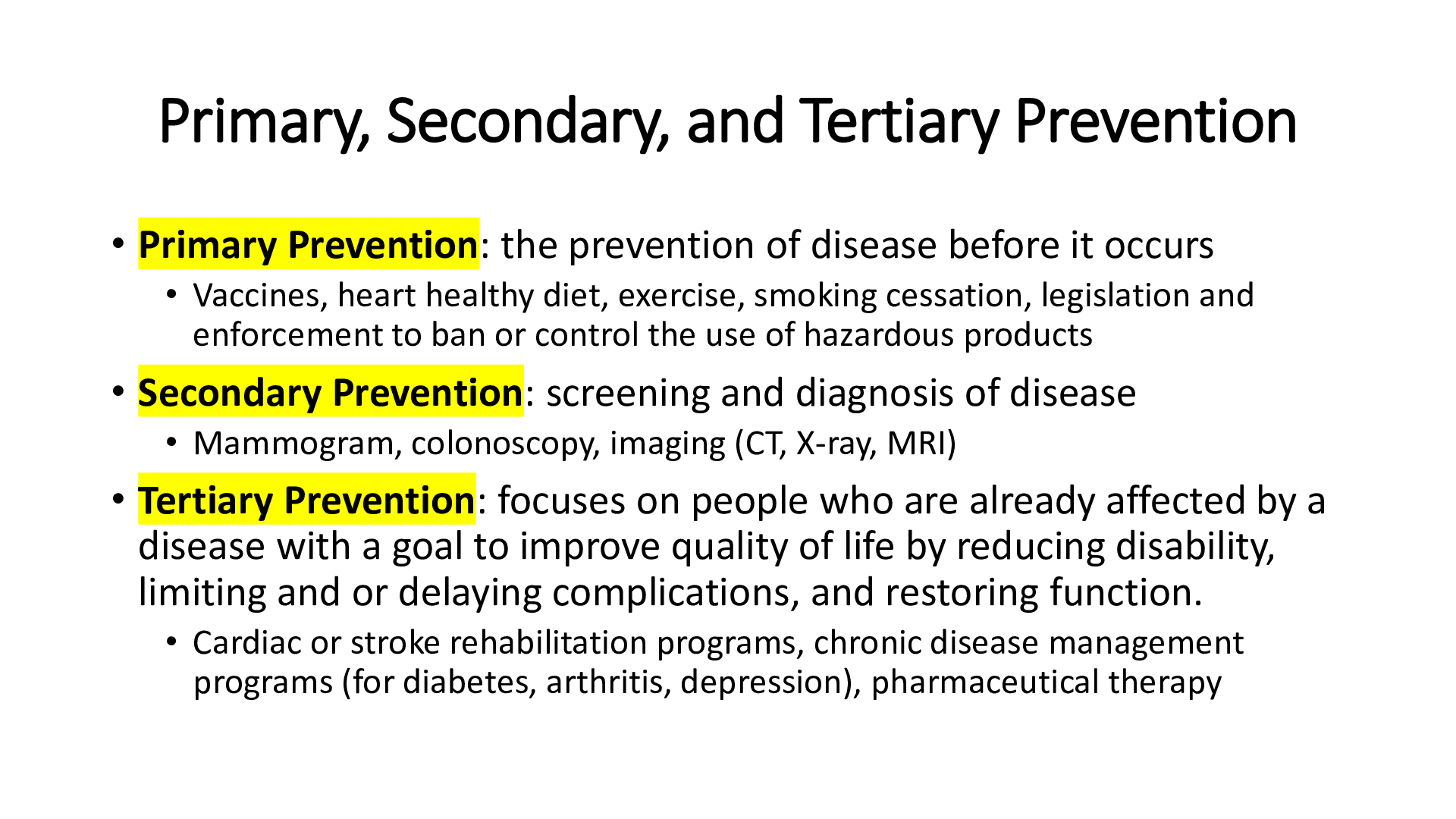Biology > EXAM REVIEW > BIOL 101 Individual Assignment 3 (All)
BIOL 101 Individual Assignment 3
Document Content and Description Below
of the entire human gene collection (the “genome”) support some previous findings that a region of human chromosome number 15 contains one or more genes that are associated with smoking intens... ity (the number of cigarettes smoked per day) and the closely related trait of nicotine dependency. Scanning people’s genomes for these genes will help them to determine their risk of addiction should they begin smoking tobacco. • Immunologists are working with a mutation (HER2) that is expressed on the surface of many breast, bladder, pancreatic, and ovarian cancer cells. They have made antibodies against this mutant surface protein. These antibodies have been covalently bonded to a “gene expression vector” that makes cells light up when incubated with luciferin from fire flies. The vector takes the gene for luciferin into the cancer cells. The researchers have shown that their antibody can accurately find and “light up” cancer cells. Their next step is to bond the antibody to an expression vector that carries the normal HER2 gene into mutant cancer cells. • Immunologists are investigating ways to destroy lymphocytes (white blood cells of the immune system) that have become cancerous (lymphomas). A current drug Rituximab contains antibodies that bind to the surfaces of these lymphocytes setting them up for destruction by the cancer patient’s own immune system. They are currently seeking ways to modify the antibody’s structure so that it will attract the cancer patient’s “natural killer” (NK) cells to the lymphocytes. Success of this project will bring a multi-faceted immune response against lymphomas and hasten destruction. • Biochemists have discovered a protein kinase enzyme named BRAF that is an important link in a molecular pathway that causes a cell to divide. Normally, BRAF responds to signals coming from outside the cell—signals calling for the cell to divide normally under normal conditions. But there is a mutation in BRAF enzymes that causes it to activate the cell toward division continually. In this way it gives rise to melanomas and thyroid or ovarian cancers. Biochemists have also found a drug, vemurafenib, which binds selectively to mutant BRAF totally inactivating it. Cells that have inactivated BRAF undergo apoptosis—a process that leads to cell death. • Molecular biologists have taken nanoparticle-sized spheres and used them to deliver a cell- killing toxin from bee venom to tumors in mice, substantially reducing tumor growth without harming normal body tissues. Nanoparticles are known to concentrate in solid tumors because blood vessels in tumors show “enhanced permeability and retention effect” or EPR. Hence substances such as nanoparticles escape more readily from the bloodstream into tumors and the [Show More]
Last updated: 1 year ago
Preview 1 out of 4 pages
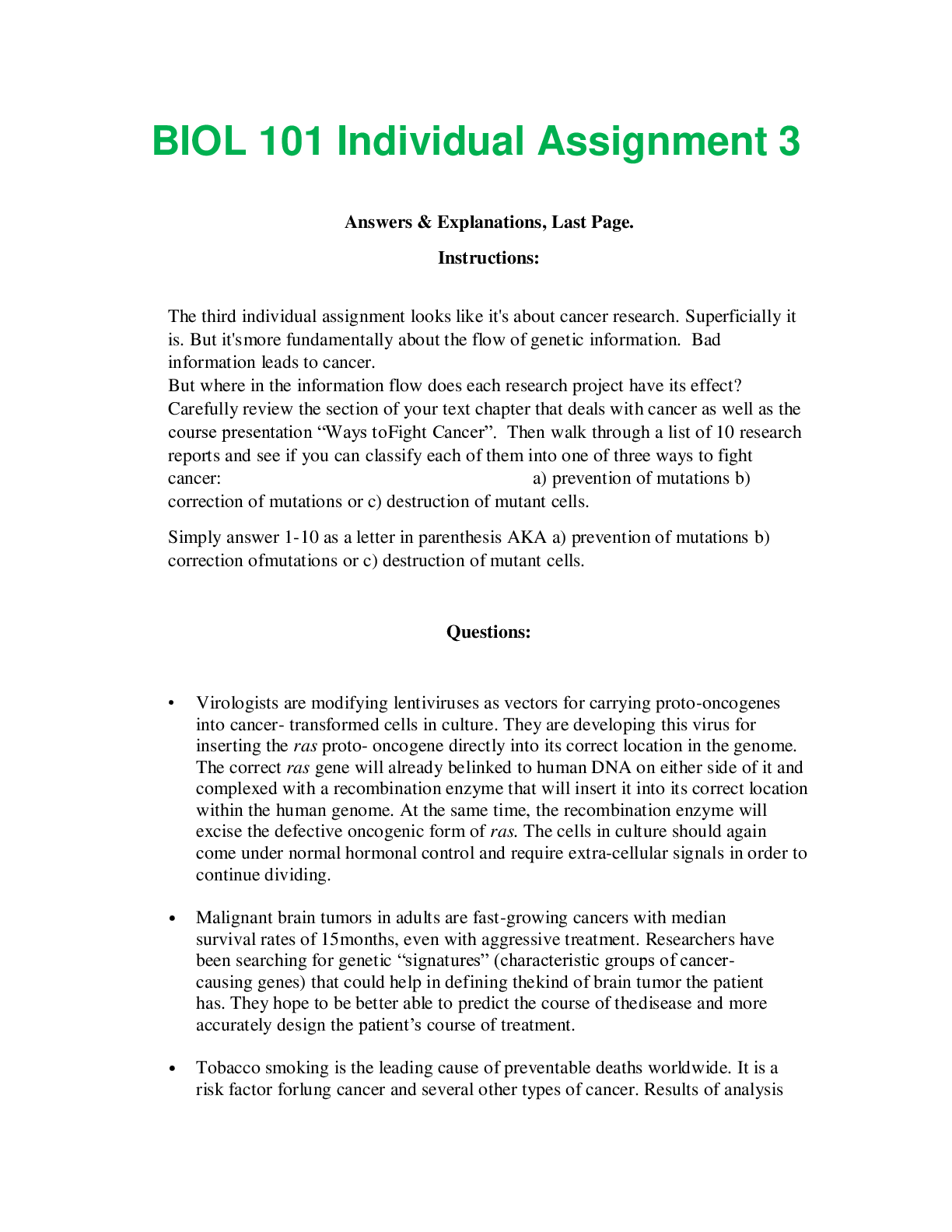
Reviews( 0 )
Document information
Connected school, study & course
About the document
Uploaded On
Apr 14, 2021
Number of pages
4
Written in
Additional information
This document has been written for:
Uploaded
Apr 14, 2021
Downloads
0
Views
65

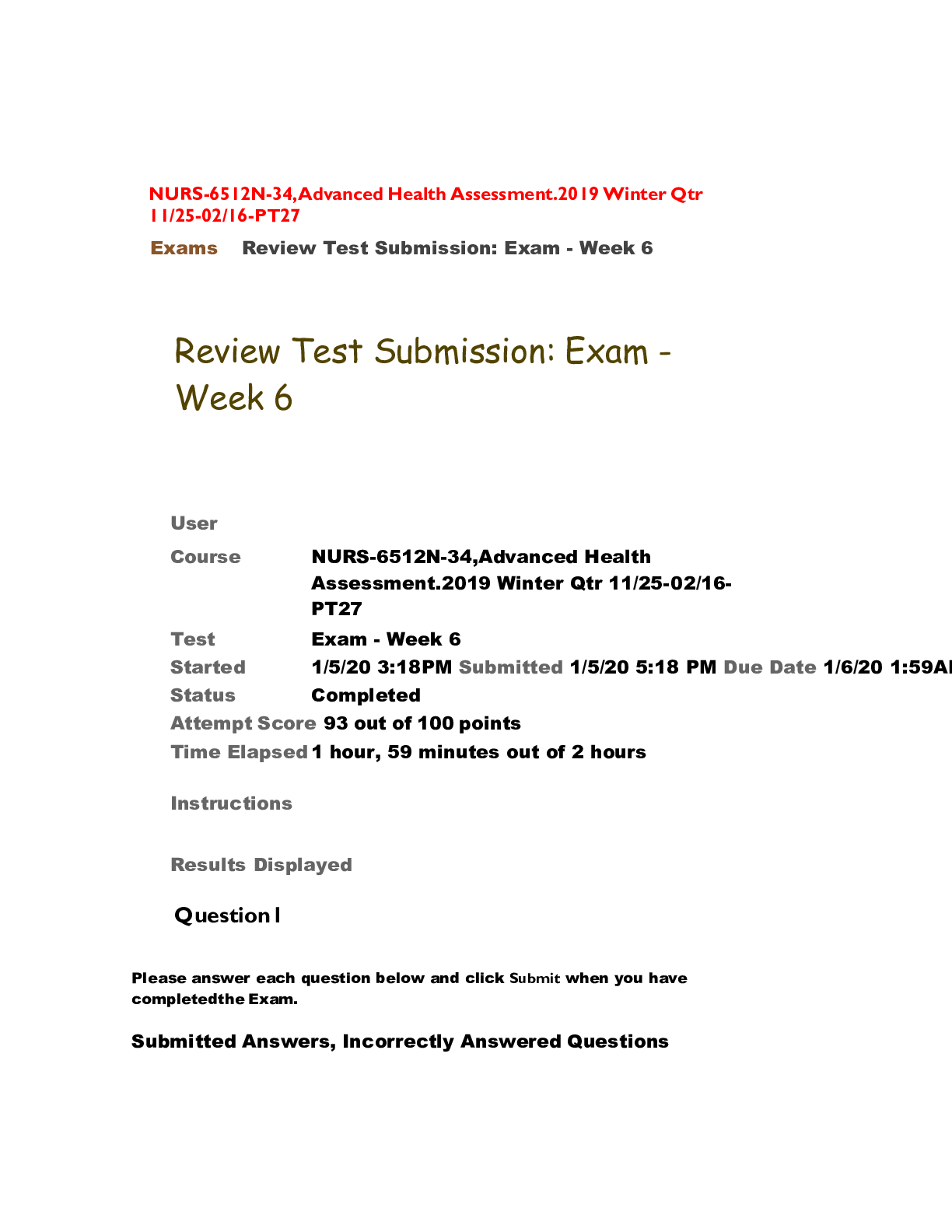

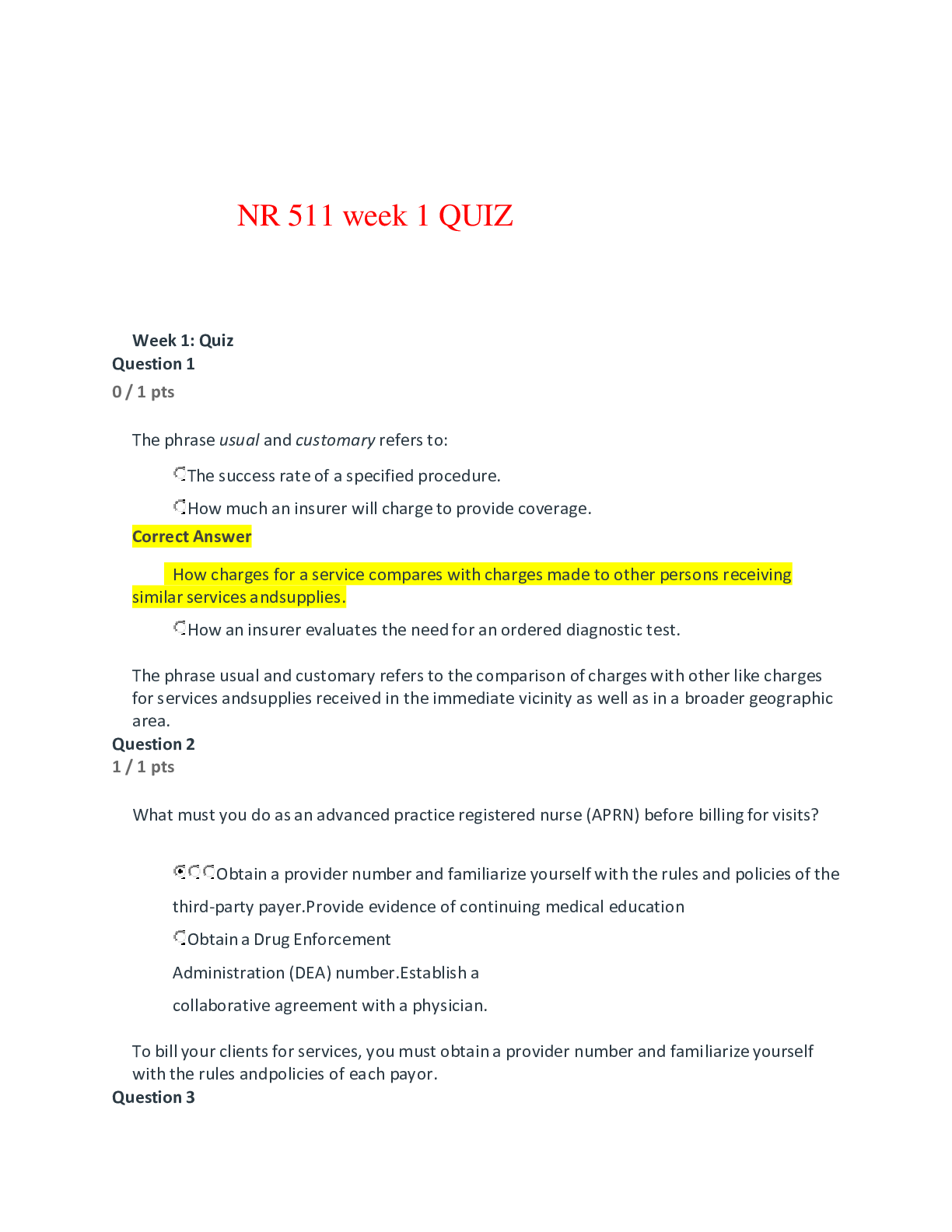


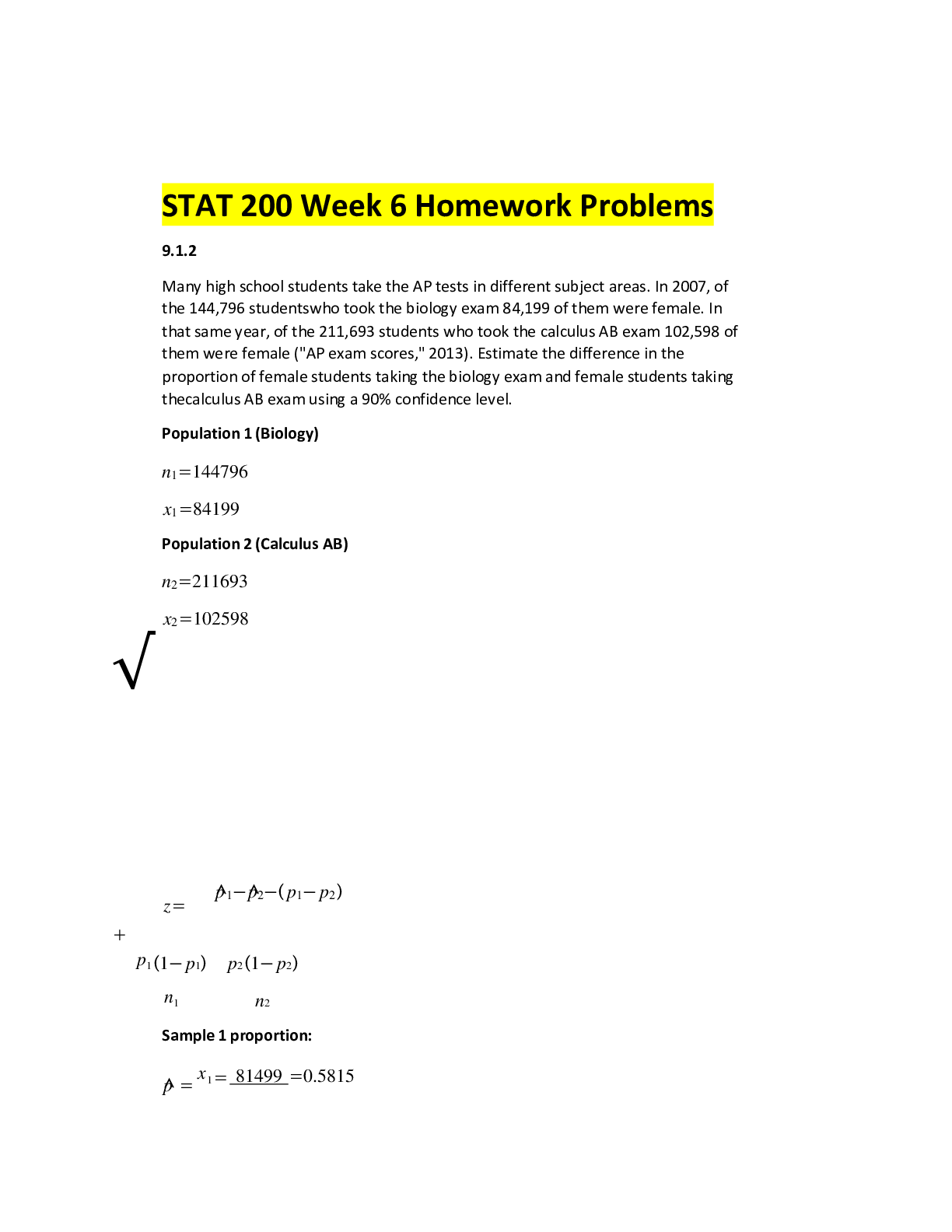

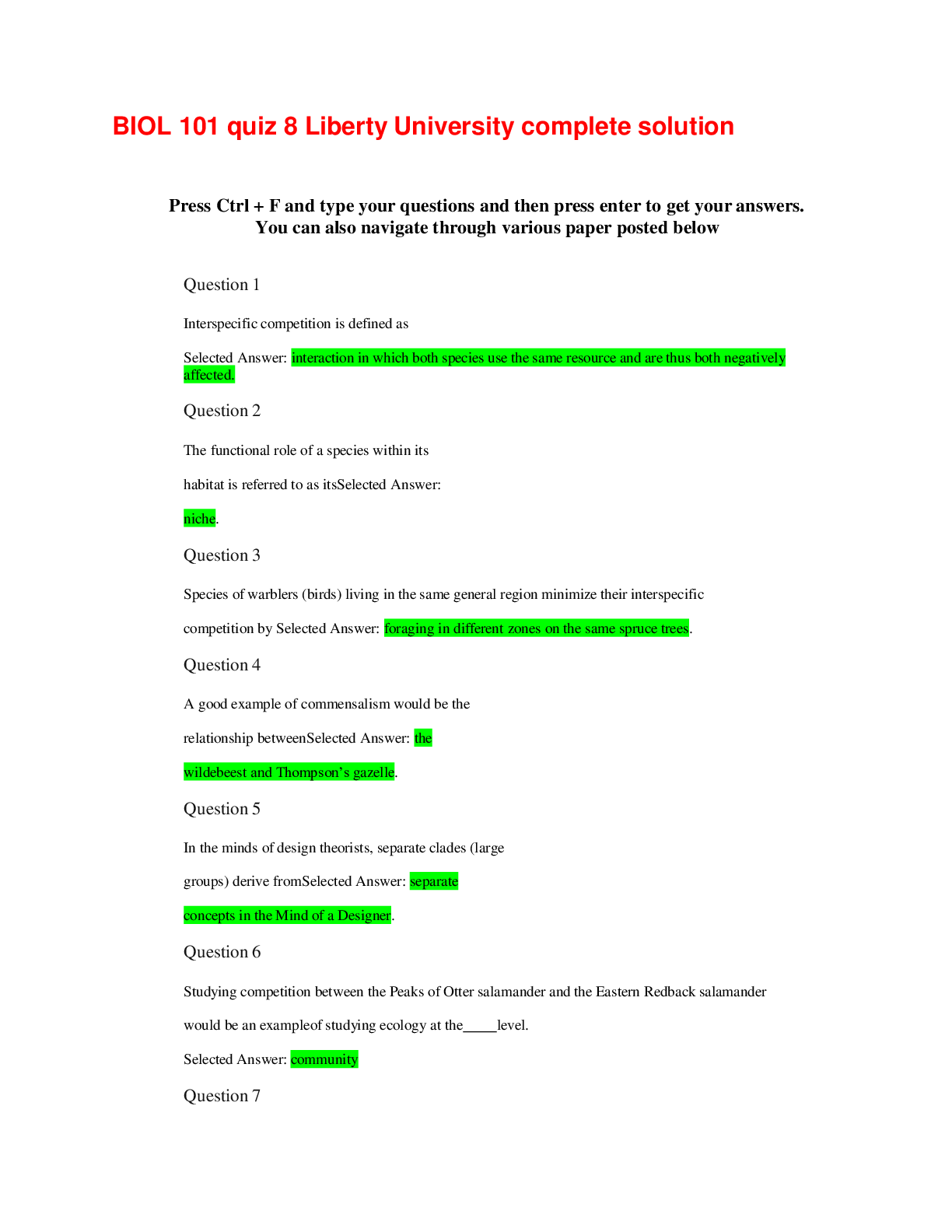
.png)


